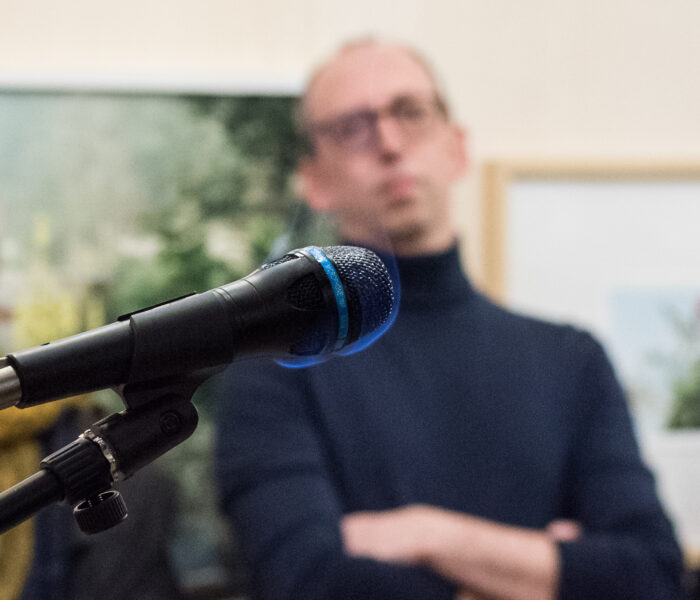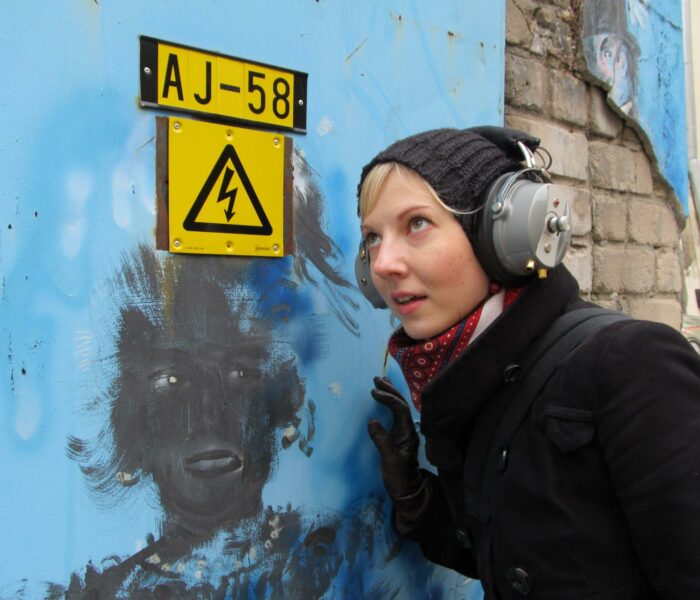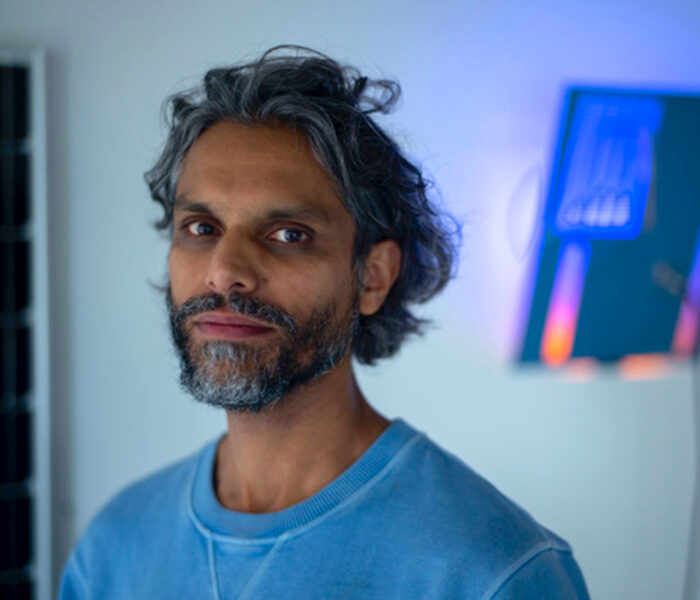For its 2023 edition, the Festival d'Automne is devoting a portrait to composer Pierre-Yves Macé. Several of the pieces on the program brilliantly explore the artist's ongoing relationship with literature, text and voice.
Pierre-YvesThe intersection of literature and music plays an important role in your work, as evidenced by the works presented this autumn in Paris. You've made no secret of the importance of Heiner Goebbels to you; what did this work mean to you?
Yes, I was particularly sensitive to the way he existed, as a composer, at the crossroads of established genres: one day he could be writing a score for theEnsemble Modern, the next working with Arto Lindsay, Don Cherry or André Wilms on a musical theater production, and the day after that composing an electroacoustic piece for radio...
I remember quite precisely when I first discovered his work. I was studying modern literature and had just started composing music. My studies and my passion for music were two relatively separate worlds. And then Heiner Goebbels came along, setting to music authors I loved or was studying at university: Alain Robbe-Grillet, Francis Ponge and, of course, Heiner Müller. His approach to texts was completely original and off the beaten track, far removed from any sacralization of the literary object: he didn't shy away from making cuts, grafts and montages. He used to say that texts were for him triggers for form, and that it was first and foremost the form of a text that made him want to work on it.
For a time, I had considered doing a research project in comparative literature on the relationship between Müller and Goebbels. But in the end, my studies branched off into musicology. And when I wrote my thesis on the notion of the sound document and its relationship to music, I included in my corpus two works by Goebbels: Shadow / Landscape with Argonauts and Verkommenes Ufer, two Hörspiele based on the same principle: the literary text is read by anonymous people we meet in the street, who discover the text at the same time as we do.
However, the piece I return to most often is Maelstromsüdpol, a radio play by Goebbels and Müller based on Edgar Poe's The Adventures of Arthur Gordon Pym . Müller's poem, admirable for its density of expression, is a real gem, as is Goebbels' music, full of contrasts and carried by exceptional performers, notably the late Peter Brötzmann. Müller's text incorporates a brief quotation from T.S. Eliot's poem The Waste Land : " That corpse you planted last year in your garden / Has it begun to sprout? Will it bloom this year? / Oh keep the dog far hence, that's friend to men / Or with his nails he'll dig it up again!" (1). Goebbels uses this as the final section of his piece, a memorable free jazz and noise jam in which these words are howled to saturation by David Bennent.
For a long time, all I knew of The Waste Land were these four lines. And when, in 2022, I myself worked on Eliot's poem for the composition of Ear to Ear, the memory of this Goebbels piece was very powerful.
Maelstrom_TrailerCut_FINALEVERSION_22-05-19 60fps.mp4 from heiner goebbels on Vimeo.
How did you come up with this Ear to Ear choral reading?
It was originally commissioned for a London festival celebrating the centenary of Eliot's poem (1922-2022). The commissioners had a fairly precise idea of what they wanted: an electroacoustic piece in which the poem would be heard recited by a multitude of voices. The choral dimension was written into the commission itself: the aim was to reveal all the latent polyphony of the poem.
During our discussions, we agreed on a number of voices (ten), and began to define the vocalities. I wanted there to be more than just actors (so that there could be quite singular voices), but also singular voices that were out of the ordinary of a "white voice" reading (without timbre): the voice of a young child, or an elderly person, for example. We wanted the quotations in French, German and Italian to be spoken by native speakers. We also needed someone with a knowledge of Sanskrit for Part 5. All in all, we had a pretty full brief. Sean and Liam, the two principals, were in charge of finding the narrators, while I did the allocation work: I decided who was going to read which passage(s). This was the first stage of composition: I determined the degree of chorality, or dramatic character, of each section.
Almost all the music came from the recorded voices. I drew melodic motifs, harmonic and rhythmic suggestions from them. Then, as the composition matured, I integrated a few electro-acoustic sounds and scribbled a few lines of score for soprano and harp... A tutelary figure stood out during this composition stage: Scott Walker, the great songwriter, who has always claimed to have been influenced by The Waste Land. I applied three principles that seem to me to be the basis of his songs: parsimony, a sense of contrast and the primacy of the text.
Ear to Ear, gave rise to two versions of the work: a "cinematic" one at the Bouffes du Nord and a sound installation at St Eustache. You offer the public a different way of perceiving and listening to the work. Do you see these as radically distinct forms, or as variations on the same form?
The form is the same, but they are two different ways of apprehending it, which will emphasize both its spatial setting (installation version) and its temporal form (concert). At the very beginning, I imagined this work as an installation, intended for "non-captive" listening, but the linearity of the poem has resisted, and really given the piece a form that should be experienced in its entirety. In the meantime, the music has been enriched by a video creation by Oscar Lozano, which projects the poem onto the screen and brings it to life - here in an unpublished translation by Joris Lacoste(1).
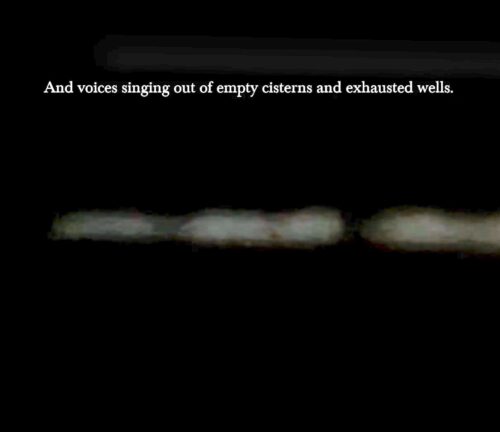
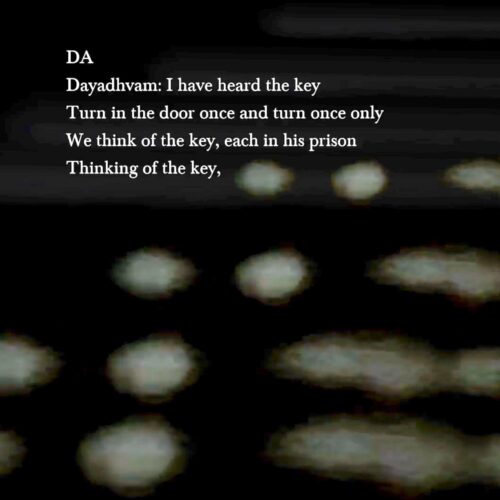
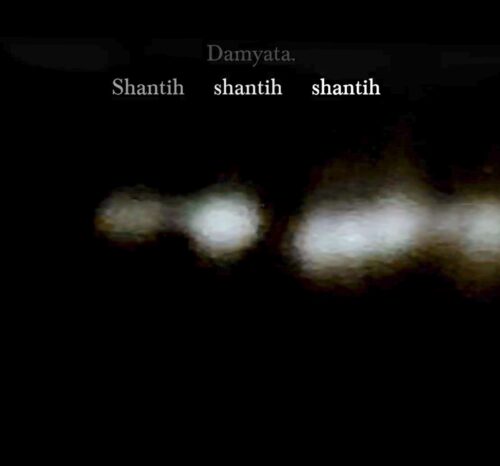
On theoccasion of this portrait, you propose to let us hear a rewriting of two of your pieces created respectively in 2017 and 2016 Maintenant, de toutes nos forces, essayons de ne rien comprendre based on a text by Pierre Senges and Kind des Faust on a text by Sylvain Creuzevault . Are these rewrites to be considered each time as a new proposition or a deepening of the writing that would erase the previous versions?
The two cases are slightly different. In the case of Kind des Faust, a rewrite was necessary, so to speak, since there was a change in the way the piece was presented. Originally, this little opera appeared in a play by Sylvain Creuzevault(Angelus Novus), in purely recorded form. This time, we are presenting it as a concert version, with a slightly larger instrumental complement and singers on stage. In the case of Maintenant, de toutes nos forces..., the rewrite was not a necessity, but rather a response to certain detailed dissatisfactions with the original version.
Having made this distinction, the rewriting work proceeded in much the same way for both pieces, i.e. each time I allowed myself to develop ideas that had only been sketched out, or I clarified musical intentions that seemed a little weak. I'm not going to replay the refrain of the eternally unsatisfied artist here: it's a topos that has its share of truth, of course, but as far as I'm concerned, these rewrites are more associated with a rather childlike joy, the joy of taking a toy apart and putting it back together again to experience what amazing things it can still produce. I sometimes think of myself as a "recomposer" rather than a composer, so much do I appreciate this work of rereading and re-reading, these fine-tuning of details which, if they don't fundamentally change the form, can make it more readable.
I can't say whether the new version supersedes the old one. It probably does, but for how long? I may be attached to the notion of the work (or at least not actively seeking to subvert it), but I find it hard to accept that it's set in stone. Basically, it's a bit like a jazzman playing the same standard 20 years apart: the music remains the same, but the two versions bear the mark of the time that has passed, of the experience that has been accumulated. In my opinion, it's these differences that make art so special.
Quotation - whether literary or musical - is a recurrent theme in your work. In the field of music, many composers have made use of them. SatieStravinsky, Berio, Stockhauseneach for a different purpose. What meaning do you give them?
Most of the time, my quotations have an extra-musical origin and produce something like a "real effect". In Song Recycle, when I sample recordings of a cappella singing found on YouTube, what interests me is not the sung repertoire, but the found footage character of the amateur recording, all that it suggests as a document. In Jardins Partagés, it's the singular expressiveness of amateur singing that holds me back.
Elsewhere, when I quote the song O Sole Mio in Je vais entendre encore une phrase de Sole Mioit's in relation to a "listening scene" precisely described by Marcel Proust in Albertine Disparue : a gondolier singing in Venice, while the narrator hesitates whether or not to return to Paris.
It seems to me that Berio's Naturale, with its recordings of Palermo street vendors singing, creates a space in which the viola and percussion are situated. That's why I wanted this piece to be played during the concert at the Théâtre du Châtelet.
In this same concert, you present the Belvedere Variations, a work inspired by the Catalan composer composer Federico Mompou...
Indeed, with the Belvedere VariationsI'm back to a more classical use of quotation. The work was commissioned by the ensemble L'Instant Donné for the Mondes Nouveaux program. It was premiered in a highly atypical location, the hotel Belvédère du rayon vert in Cerbère, a village on the Spanish border in the Pyrénées Orientales. It's a kind of in situ concert piece, which I wanted to be as open as possible to its immediate environment: Catalan culture, and the sardana in particular, a very popular dance in Catalonia.
Mompou, who was Catalan, wrote many scores inspired by his musical tradition, notably a cycle for piano, the Cançons i danses, a dozen small pieces constructed as a diptych: a first part dedicated to song and lyricism, and a second, more lively part dedicated to dance. I'm doing much the same thing in Variations Belvédère, but condensing a multitude of quotations in each part of my diptych. And as my piece is for voice (soprano and ensemble), there's also the language: you can hear Catalan in it. In the first part in particular, I practiced both literary and musical editing, taking and juxtaposing fragments of traditional songs. What was new and stimulating for me, of course, was the literary dimension of all this: to observe how I could play with the meaning of words by decontextualizing them. One example among many: at one point, I quote a Catalan song, "La Remendraye" (the net-gatherer), whose lyrics are particularly misogynistic. The net-gatherer in question is a young woman who doesn't like to work, preferring to "invite the boys" behind the bushes. And the scathing chorus goes something like this: "Everyone knows: you'll never find a beau ". I noticed that simply by removing this refrain and reshaping the accompanying harmony, this rather silly and nasty satire could be turned into a portrait of a proud and emancipated woman.
Pierre-YvesYou seem to navigate between the abstract and the real. Do you have any other means of staying on course than relying on text or voices?
It's true that most of my pieces have an extra-musical or documentary starting point, often linked to voice or text, but this isn't systematic. For example, in Notes pour les diapasons invisibles, a mixed piece to be performed by the Dedalus ensemble at the Théâtre des Bouffes du Nord after Ear to Ear, I worked from a set of recordings of birdsong, slowing them down to match (or not) the instruments' registers. Once slowed down, bird song reveals treasures of melodic and rhythmic complexity, which I drew on to write the score. So there's a whole game of coincidence and de-coincidence, of phasing and de-phasing (to use a Steve Reich terminology), between the birdsong and the instruments, a game that creates a polyphony that is sometimes very dense, bordering on entropy. I'm far from the first composer to be fascinated by birdsong, to say the least! But perhaps in my approach to the vox animae, there's the memory of the work I've been able to do with human speech with the Encyclopédie de la parole, the shows Suite no 3 (2017) and Suite no 4 (2020) in particular. The songs of the red warbler or the blue monticole opened up my listening and shifted my writing in the same way as the recorded speech documents - even if the otherness was more radical, and the challenge for composition even greater. At the end of the day, we're still in the realm of the voice...
Interview by Anne-Laure Chamboissier
(1)Translation of the poem by Joris Lacoste: Le cadavre que tu plantent l'an dernier dans ton jardin, /A-t-il commencé à germer? Will it bloom this year?/ Oh, keep the dog away, this friend of man, /Or with his claws he'll dig it up again!
Photo © Christophe Berlet



)
